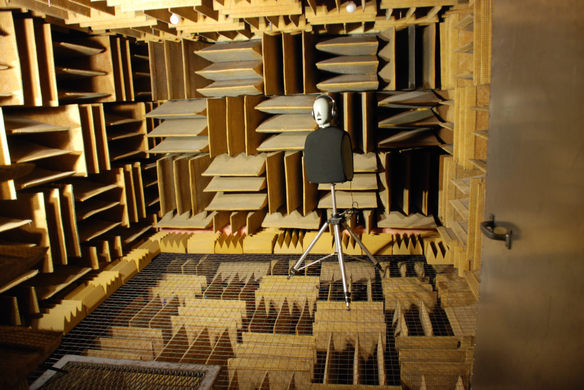
In the New Yorker, Hua Hsu reviews two recent books on the pursuit of silence in an increasingly noisy world: Hush: Media and Sonic Self-Control by researcher and musician Mack Hagood, and In Tune: Music as the Bridge to Mindfulness by composer Richard Wolf. While Hagood’s text is a penetrating inquiry into how we use technologies of silence to close ourselves off from the world, Wolf’s book is concerned with carving out spaces of everyday “mindfulness.” As Hsu writes, these books remind us that “sound, after all, is a form of community – a physical force that passes through us, even if we try to close our ears.” Here’s an excerpt from his piece:
During the last forty years, the advent of the personal-listening device has given us the capacity to change our soundscapes at a whim. Early media theorists described this as “the Walkman effect,” as users began to feel more ownership and power as they moved through their daily lives. Contemporary scholars have begun pondering the relationship between sound and personal choice against a broader spectrum of emotional possibilities. What are the consequences of using technology to assist in the quest for confidence or serenity? How do we use sound to control our moods? Could it be that what we’re really after is the feeling of control itself?
Noise, as Hagood reminds us, in the “ear of the perceiver.” And yet we also think of it as an objective threshold, “a kind of sonic excess or nonsense or hazard”—something that not only bothers us but presumably bothers everyone else, too. Hagood points out that we now often talk about personal freedom in terms of what we don’t have to listen to, and he focusses, in the book, on our efforts to navigate sonic nuisances, and also the paradox of combating sound with more sound, in a world that has become loud enough to damage our health. Rather than freeing us from our anxieties, noise-cancelling devices provide only a temporary buffer, and they bring us deeper into dependency on the technologies, or networks, that may have seemed overwhelming to begin with. Hagood is interested in the way that orphic media is constantly “dulling and sharpening the senses, generating new aural sensitivities and means of suppressing and masking sound,” all in the name of self-control.
Image: The quiet chamber at Orfield Labs, Minneapolis, USA. Via Atlas Obscura.